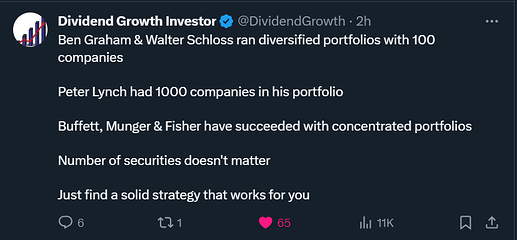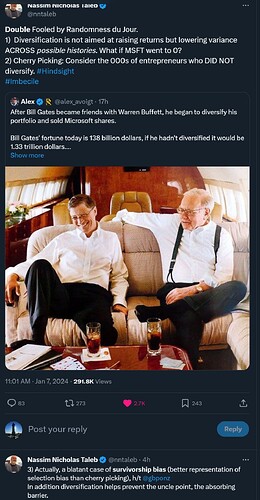Thanks for highlighting this so clearly to me. Seems excessive in hindsight ![]()
My goals will be to:
- Fill up the 3a on a quarterly basis instead of a one-off (since I hold Dev ex-US there, to simulate DCA)
- Continue fairly regular (at least quarterly) contributions to the “plain” ETF pool at IBKR
- But always synchronized with the Cortana indicator
- Consider adding a bit to the AVUV and AVDV, since I didn’t in a while
- Not spend any play money, but rather stop pretending I know what I’m doing, and cull the majority of the individual stocks I played with (will be a bit harder with some of the losers, but got to listen to the rational half of the brain)
- Continue the personal loans partnerships, as they present a fair diversification to me
This. When I started investing, I aimed for 25% of Emerging markets. They have been lagging now for 7 years straight… I did not sell any but eventually stopped investing more. Now I’m at about 16.5% EM …
GDP growth is actually even slightly negatively correlated to stock returns. That’s what the research says at least. It’s super counterintuitive.
I still hold about 10% EM, it’s a good diversifier. But only factor funds from Avantis. I feel like they weed out many of the absolute trash companies with their methodology.
Which ones do you hold?
Yeah I also used to have a slightly higher allocation in EM. A lot of Germans do this with 30-40% which is just crazy and will have a huge performance drag. Now I’m at 8% and will leave it there.
I had also around 10% of AVEM in the past but had to sell to get more cash for the downpayment of the mortgage. At that time I was surprised by the good dividend but else it did not influence much my portfolio to the down or up. I am considering in the future maybe to have a mix 5% AVEM and 5% AVES. What is your mix? or do you have just one? At the time I got AVEM, there was no AVES afaik.
Currently 5% AVEM and 5% AVES, but will switch the latter to the new AVEE once it’s fully built. AVES has too high of a dividend yield of 4% for my liking, which isn’t the most tax efficient, else I would keep it.
AVEE is not strictly small cap value, it’s “only” small caps, but as it’s Avantis, it still has a pretty strong factor tilt, as you can see at morningstar: AVEE – Portfolio – Avantis Emerging Markets Sm Cp Eq ETF | Morningstar
Are you familiar with Fama/French research? Im pretty convinced, especially in Avantis approach to combine factors methodically. So far their funds also have proven themselves. Their core funds for example have mostly outperformed their classic mcw counterparts (VTI vs. AVUS for example)
I think concentration risk is actually increasingly getting higher with market cap weighted funds. Just look how the top 10 stocks dominate the S&P more and more.
But Im not hoping for some crazy outperformance, after cost some 0.5% over the longterm. The discovery of teh factors certainly put some damper on their return.
There is also XSOE from wisdomtree, that specifically excludes state-owned companies, that may be interesting to you.
Yep, it’s crazy that this is so widespread, due to Finanzfluss. It doesnt make any sense and is not rooted in any sound theory. Anything above 15% is just gambling on EM somehow doing crazy outperformance in the future. It’s in the same category as stock picking in my opinion, overweighting a region like that.
See above, that’s my exact mix right now.
Interesting this AVEE… so basically it is a mix of AVES+AVEM but only including small caps if I understand correctly. The TER is quite high though it’s around an extra 0.1% fees compared to AVES or AVEM. Probably one advantage of AVEE is that if you already have VT you don’t include again all the large caps EM stocks. Will have to keep an eye on it.
Main issue with emerging markets for investors as far as I know: the huge GDP growth is mostly due to companies that aren‘t even on the stock market. Either not publicly listed or too small in the beginning to profit from any significant growth.
Good point.
To be more targeted on EM, I have added ETFs tracking specifically Latin America (ALAT/LTAM).
Maybe you could say that haha. And yes it’s focusing on small caps. Small is also one of the factors promising higher expected returns.
Pretty much, technically you have them in VT as well, but like at 0.0X% so not doing much of anything.
small caps + emerging markets is one of the riskier sectors of the market and expected return consequently should be high.
Cost is higher of course, due to the diffuculty of investing in that space and the fund having higher trading costs.
AVEM + AVES is still a very nice pair though.
I also like the fact that these two combined offer you in total +4000 stocks so quite some diversification in terms of companies whereas AVEE has “only” ~1000 stocks.
Is having so many a benefit? I wonder if you could just select 20 stocks and then split your allocation to these?
e.g. just split between:
TAIWAN SEMICONDUCTOR MANU
SAMSUNG ELECTRONICS CO
TENCENT HOLDINGS LTD
PDD HOLDINGS INC
SK HYNIX INC
INFOSYS LTD
PETROLEO BRASILEIRO SA
LENOVO GROUP LTD
TATA CONSULTANCY SERVICES
ASE TECHNOLOGY HOLDING CO
NETEASE INC
BYD CO LTD
Reliance Industries Ltd.
HDFC Bank Ltd.
Vale SA
China construction bank
ALIBABA GROUP HOLDING
I would advise splitting across as many as you personally are comfortable with and SWAN (sleep well at night).
In the words of a Twitter account I follow:
(source: x.com)
Slightly orthogonal, but related:
(source: x.com)
If you believe that this composition of 20 stocks will outperform the respective EM indices then yes that might be better but at what risk… Also I do not fancy managing 20 EM stocks myself.
Warren Buffett would agree with you, however his quote is:
“Diversification is protection against ignorance” “It makes little sense if you know what you are doing.”
Most of us would not know what we are doing when picking single company stocks, furthermore, we would not be willing to input the consequential amount of time required to properly value (and weight) those businesses.
People who know what they are doing should feel safe picking concentrated positions.
I would add that it’s psychologically easier to concentrate if you don’t need to worry about survival. If you can easily live off of two or three of your 10 or 20 bets regardless of how the rest of them do, yeah, fine, concentrate and enjoy your potentially higher returns and be immune against the higher volatility since you’ll live fine regardless.
BTW, despite Warren rooting for a Warren Buffett’s Punch Card Approach (make only 20 investments in your life and therefore be super selective about them) he has violated this himself over and over. I think the more affluent you are, the easier it is to only make a few bets.
Whatever suits your style and you’re able to stick with it through tough times IMO works best for you.
My thinking was that if your EM allocation is just 5% of the portfolio, then the 20 stocks would each be 0.25% of the portfolio, so you could just buy and forget about it and have your EM exposure.
If you have a portfolio of 5000, then you have an average of 0.001% in each company which seemed a bit silly to me.
Yep, that’s why I hold broad ETFs and BRK.B ![]()

